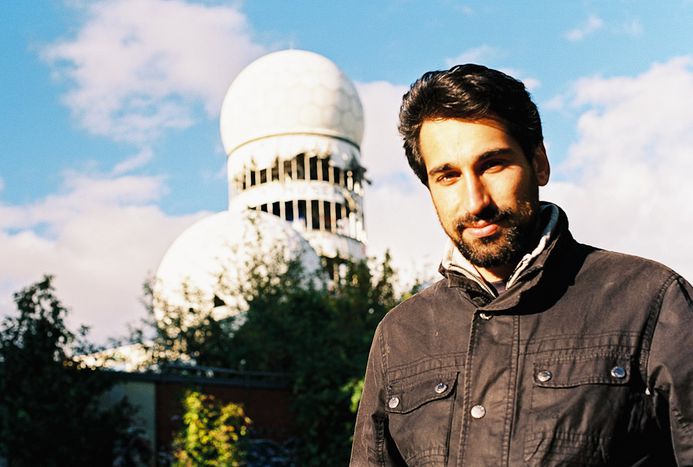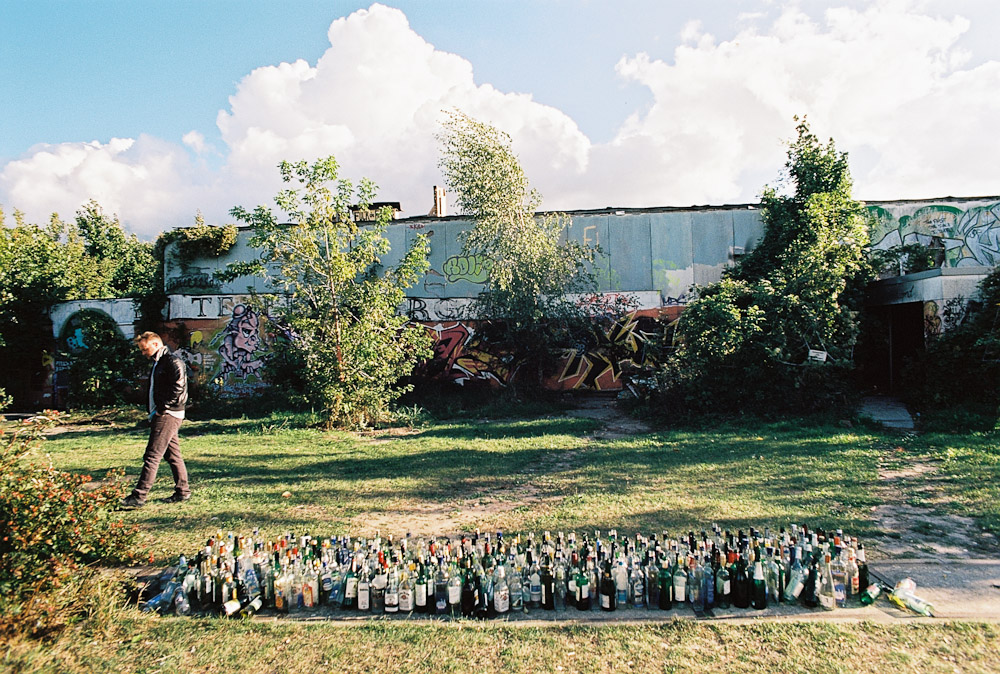
Touristy Teufelsberg: Berlin's gentrified cold-war relict (14 images)
Published on
Once upon a time, the ‘listening’ intelligence station was manned 24/7 from the 1960s until the fall of the Berlin wall. The secret gem on a hill of the German capital, otherwise known as 'devils mountain', offered adventure and great views of the city. Nowadays organised tours are officially on weekends at 2pm but in practice, organisers are stalking the complex for people who jump the gate or find holes in the fence, only to charge them or force them off the premises. There are also official plans to host clean energy projects as well as artists. There may be no citizens here, but Teufelsberg's story is a prime attempt at gentrification, though the emergent spontaneous sense of spirit seems to have tamed and dissolved with recent developments. As legal as it all may be, it doesn’t feel right, says Serbian photographer Luka Knezevic-Strika
This gallery is part of the sixth edition of cafebabel.com’s flagship project of 2012, the sequel to ‘Orient Express Reporter’, sending Balkan journalists to EU cities and vice versa for a mutual pendulum of insight
.jpeg)
The Devil’s Mountain aka Teufelsberg in Berlin is a story in itself - man-made from the rubble of hundreds of thousands of bombed Berlin houses, put on top of a never-to-be nazi military academy. On top of the hill lies this cold-war relic, the listening station. View from the road in the German forest Grunewalde (Image: © Luka Knezevic-Strika for 'Orient Express Reporter II', Berlin 2012/ belgraderaw.com/ on flickr/ on twitter)
.jpeg)
This fence has been repaired and breached multiple times in the past years, a sign of the struggle of Berliners and other guests to get in (Image: © Luka Knezevic-Strika for 'Orient Express Reporter II', Berlin 2012/ belgraderaw.com/ on flickr/ on twitter)
.jpeg)
When the holes in the fence are all patched up, the gate has to do (Image: © Luka Knezevic-Strika for 'Orient Express Reporter II', Berlin 2012/ belgraderaw.com/ on flickr/ on twitter)
.jpeg)
A ‘reception desk’ on the other side of the gate with a disconnected phone (Image: © Luka Knezevic-Strika for 'Orient Express Reporter II', Berlin 2012/ belgraderaw.com/ on flickr/ on twitter)

In the centre of the complex, a place used for parties, and bottles that are evidence of a recent one (Image: © Luka Knezevic-Strika for 'Orient Express Reporter II', Berlin 2012/ belgraderaw.com/ on flickr/ on twitter)
.jpeg)
This Dutch tourist went to a party at Teufelsberg earlier in the summer and is now back in an attempt to explore the complex on his own, rather than pay for a tour. It proves impossible, and after a little struggle with the tour operator Shalmon, who refuses to let him walk around, a very large security guard acts as ‘muscle’ and kicks all of us out (Image: © Luka Knezevic-Strika for 'Orient Express Reporter II', Berlin 2012/ belgraderaw.com/ on flickr/ on twitter)
.jpeg)
The crew who operate the tours seem to have a deal with the investor group that bought the premises and didn’t succeed in turning it into a luxurious apartment complex (Image: © Luka Knezevic-Strika for 'Orient Express Reporter II', Berlin 2012/ belgraderaw.com/ on flickr/ on twitter)
.jpeg)
Shalmon Abraham - one of the tour guides, and the man behind the whole operation - wants to make Teufelsberg more organised, less fun, and therefore safer. Some of his concerns are legitimate, but it feels it would be a better place if it stayed more open. Maybe this is impossible, but plans people had for Teufelsberg failed before (Image: © Luka Knezevic-Strika for 'Orient Express Reporter II', Berlin 2012/ belgraderaw.com/ on flickr/ on twitter)
.jpeg)
The cold-war relic is one of the biggest and probably the most important ‘listening’ intelligence stations consists of a complex of several towers with radomes. These used to be fitted with radar equipment and manned 24/7 from the 1960s until the fall of the Berlin wall. This is a view of the main radome, and a smaller one in front of it (Image: © Luka Knezevic-Strika for 'Orient Express Reporter II', Berlin 2012/ belgraderaw.com/ on flickr/ on twitter)
.jpeg)
Ex-army officer Christopher Mclarren used to work here in the 1970s and is now one of the tour guides. He feels that the listening station on Teufelsberg, and the Russian one on the border to the east, were actually the wardens of peace, because both sides ‘knew everything’ they did. So any action would have been less likely to succeed. This knowledge was one of the reasons neither of the sides did anything (Image: © Luka Knezevic-Strika for 'Orient Express Reporter II', Berlin 2012/ belgraderaw.com/ on flickr/ on twitter)
.jpeg)
Tower of the main radome, which offers unmatched acoustic properties. The drapes on the walls were partially cut as an artist intervention in 2001 (Image: © Luka Knezevic-Strika for 'Orient Express Reporter II', Berlin 2012/ belgraderaw.com/ on flickr/ on twitter)
.jpeg)
Grunewalde forest and far west of Berlin from the highest tower (Image: © Luka Knezevic-Strika for 'Orient Express Reporter II', Berlin 2012/ belgraderaw.com/ on flickr/ on twitter)
.jpeg)
Inside the main radome, people usually savour the moment, and listen to seemingly everlasting echoes of every sound they make (Image: © Luka Knezevic-Strika for 'Orient Express Reporter II', Berlin 2012/ belgraderaw.com/ on flickr/ on twitter)
.jpeg)
Sunset from the top level of the main radome, through the drapes that constantly wave in the wind, creating a powerful sound. Heard from the nearby forest, it sounds like a heavy truck on a road somewhere in the distance (Image: © Luka Knezevic-Strika for 'Orient Express Reporter II', Berlin 2012/ belgraderaw.com/ on flickr/ on twitter)
This gallery is part of the sixth edition of cafebabel.com’s flagship project of 2012, the sequel to ‘Orient Express Reporter’, sending Balkan journalists to EU cities and vice versa for a mutual pendulum of insight



